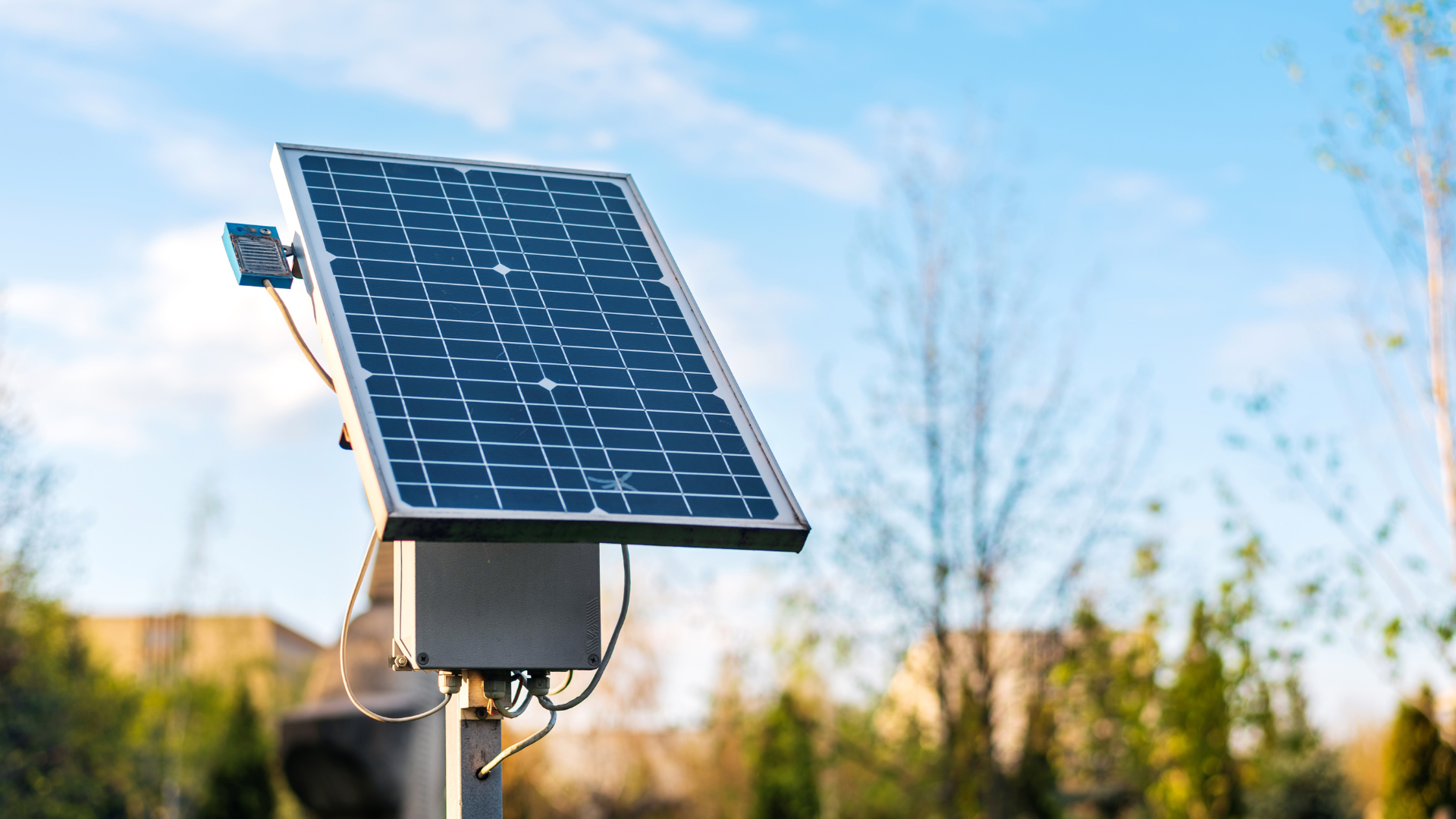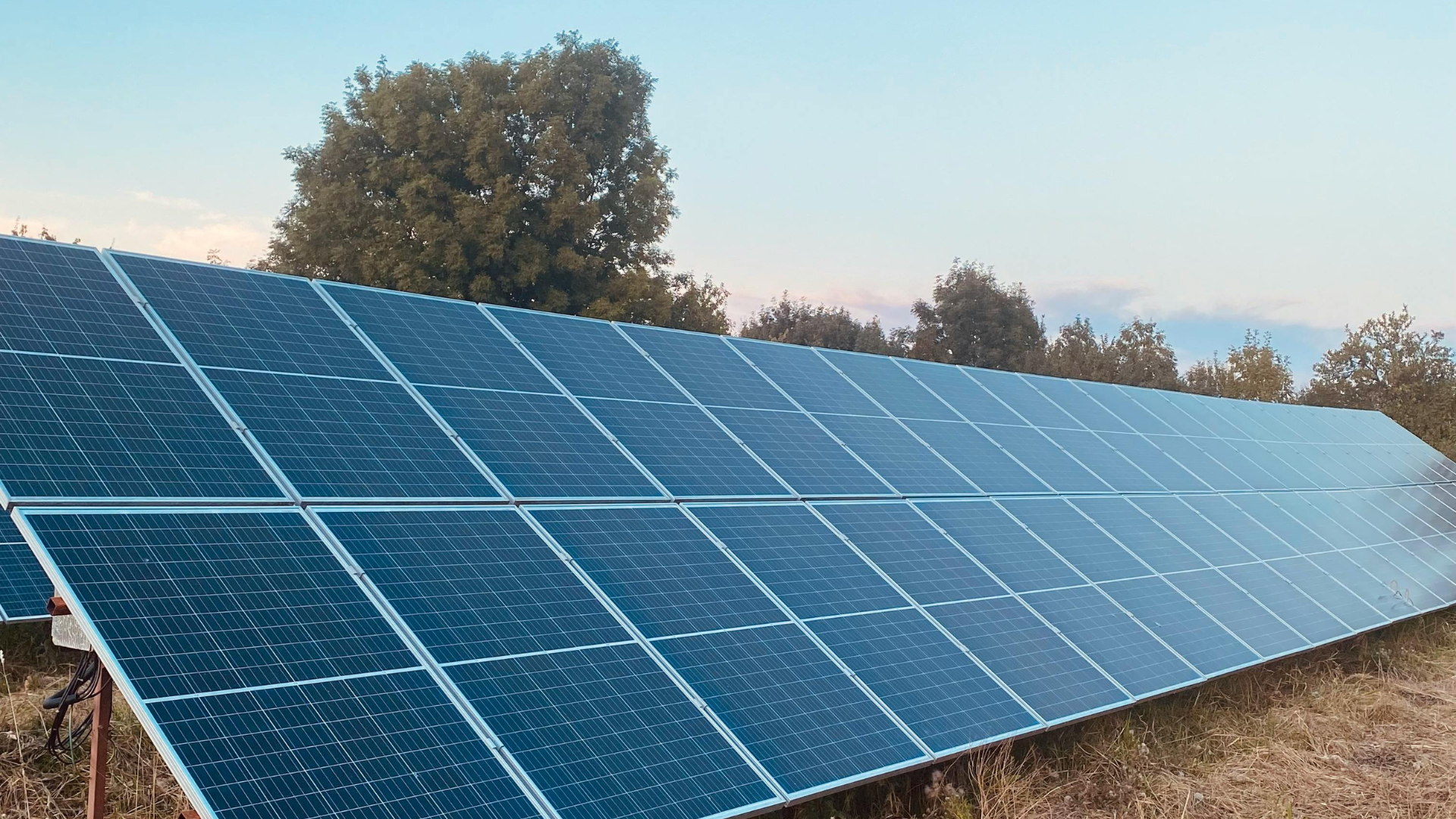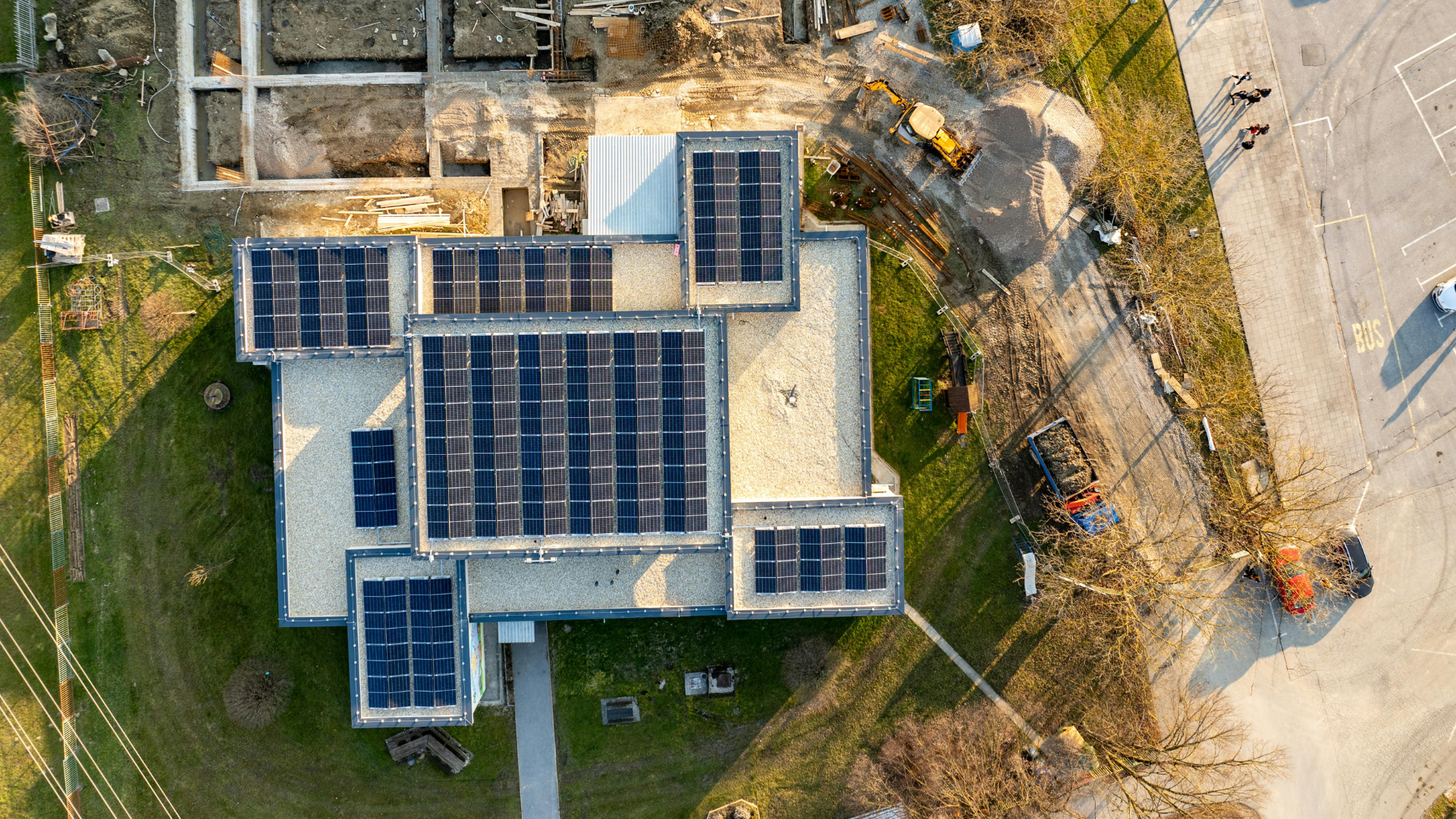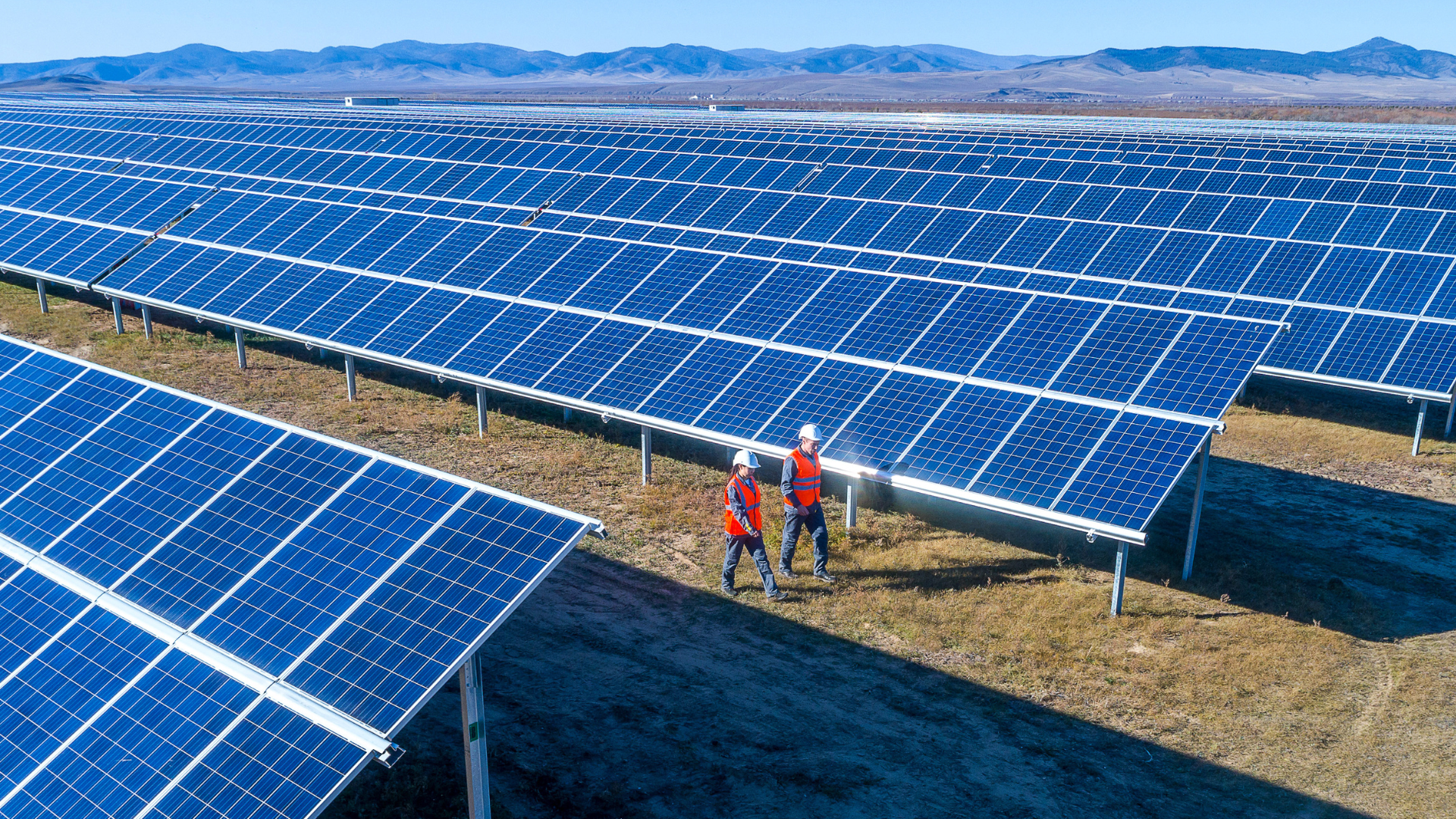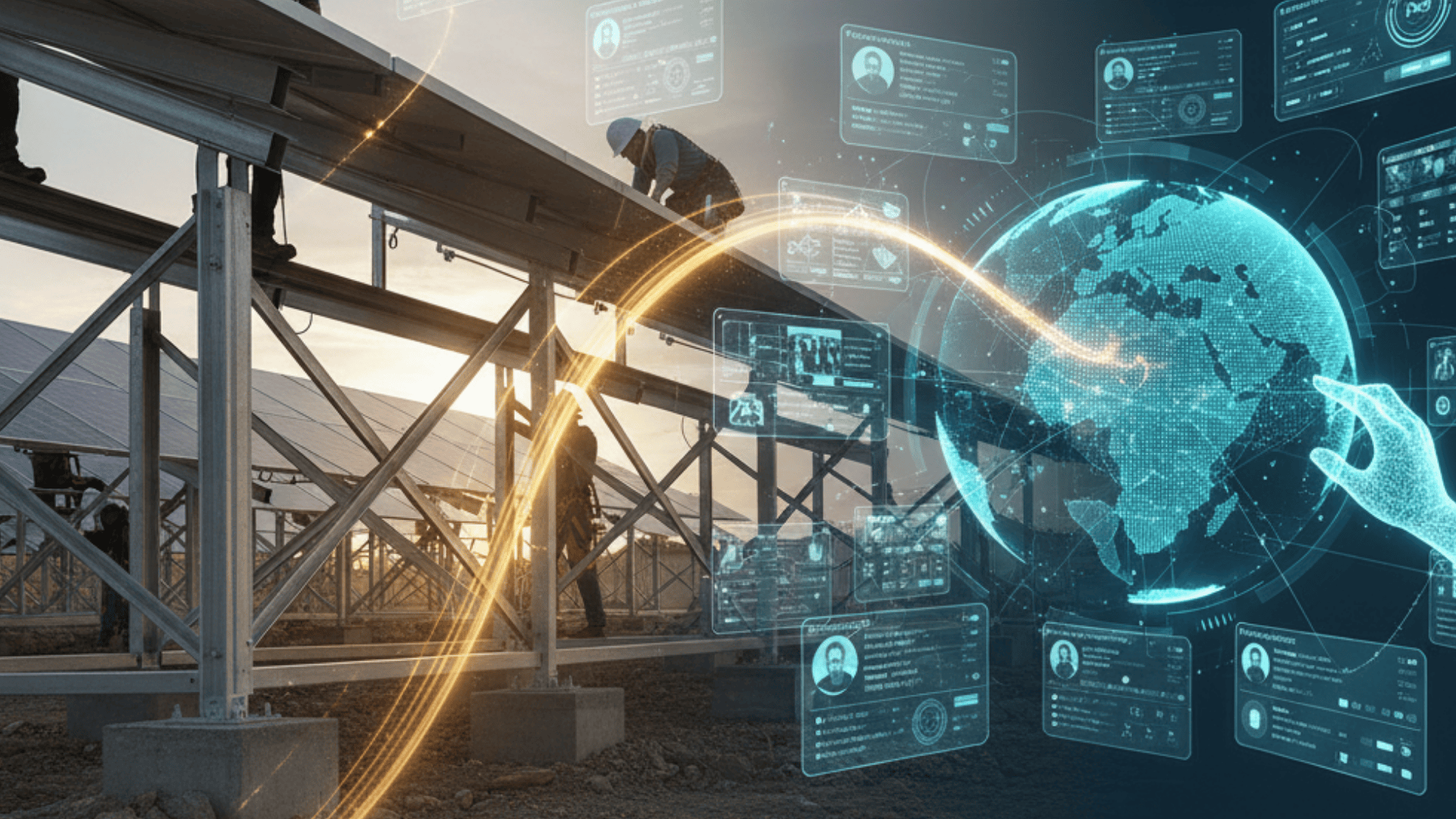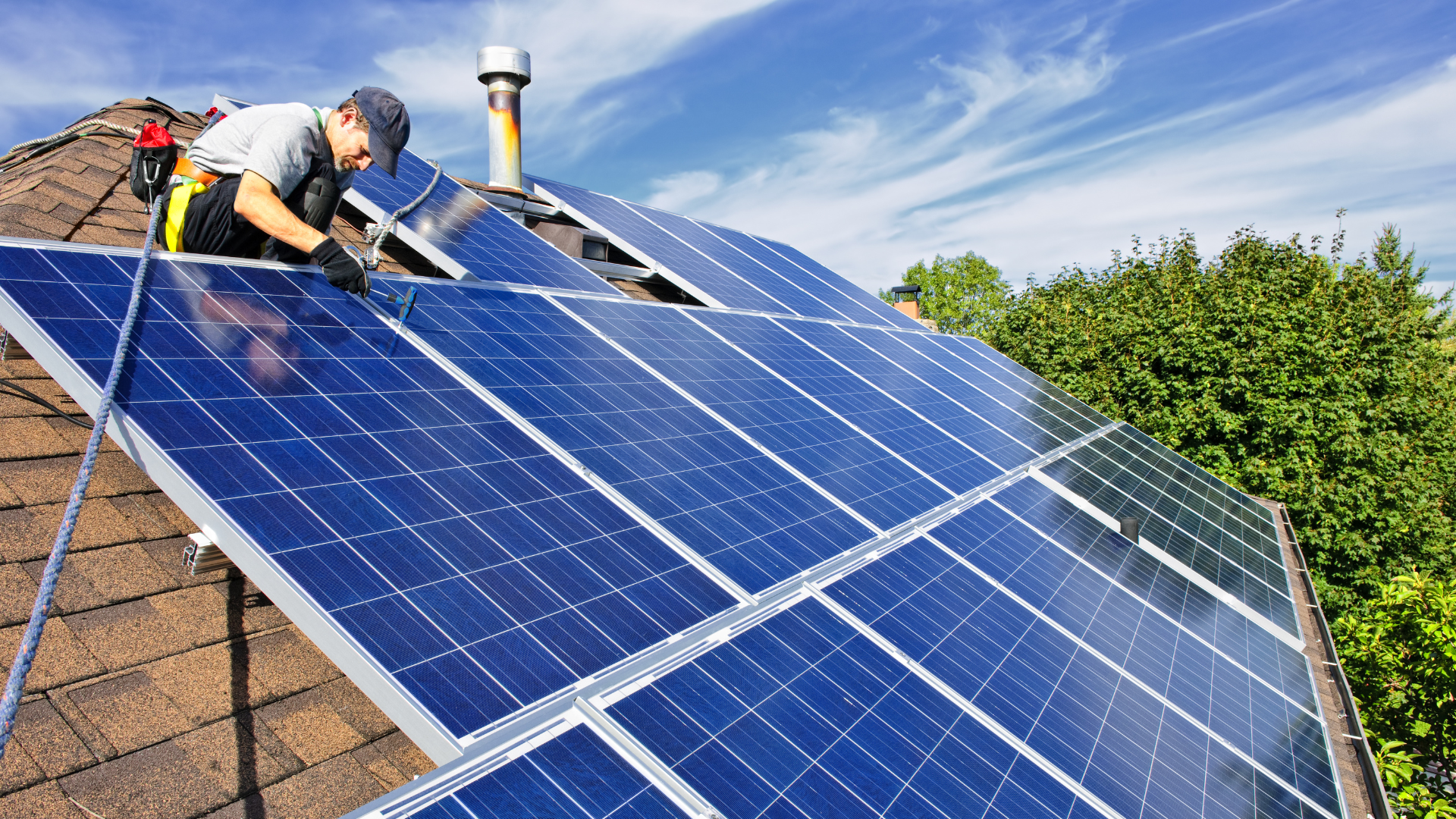May 8, 2025
Have you ever wondered why some solar installations generate electricity with ease, while others struggle to keep the lights on? Well, you are missing out on something here!
Solar system design is the hidden fact that determines whether your investment will be a success or fall short of expectations.
If you're thinking of your first solar installation or wondering why your current system isn't performing as expected, understanding the fundamentals of solar system design will help you make better decisions.
After all, when the energy is free (thanks to the sun!), your return on investment comes down to one thing: how efficiently your solar system can capture and convert that energy.
Let's see why solar system design could be the most underrated factor in your journey towards energy independence.
Key Takeaways
- The link between system design and solar energy output: ROI, long-term performance, and fundamental factors in energy conversion.
- Key elements of high-performance solar system design: Site assessment, technology selection, panel tilt, sizing, efficient inverter pairing, smart layout planning, load requirements, and net metering strategies.
- Common design mistakes: DIY disasters, ignoring future needs, and neglecting incentives.
What Is Solar Design, Exactly?
Let's take a look at why design is everything!
> Quick definition
Fundamentally, designing a solar system involves planning how solar panels, inverters, batteries, and other components will work together to capture every ray of sunlight and convert it into usable electricity for your home or business.
Most importantly, this process takes into account your energy consumption habits and the specific features of your property.
> The Photovoltaic Effect Explained
A sneak peek into the history:
The photovoltaic effect was first discovered by Edmond Becquerel in 1839. (Wikipedia)
Before diving deeper, let's take a quick look at how solar panels actually work. The photovoltaic effect sounds complex, but the concept is surprisingly simple:
The photovoltaic effect refers to the process by which light energy is converted directly into electricity by materials, usually semiconductors like silicon. This transformation occurs when light photons hit the material, energizing electrons that escape from their atomic bonds, thus producing an electrical current.
In simpler terms:
- A solar cell receives sunlight.
- The light stimulates electrons in the semiconductor material.
- Stimulated electrons move to generate an electric current, which can power devices.
That’s what powers your home, your lights, your refrigerator, and even your electric vehicle.
But here’s the catch: Just because sunrays hit a panel doesn’t mean it’s functioning at its best. Poor design can affect this energy conversion process in big ways.
The Link Between System Design and Solar Energy Output
Here's where things get interesting. While you may believe solar panels take center stage, it's actually system design that plays a crucial role in determining your energy production.
> How poor design = wasted potential
Let's take a look at this example first: Why can two identical homes yield drastically different solar outcomes?
There are House A and House B. Both have 10 panels, but:
- House A: Panels face south, tilted at 30°, no shade. Result: 100% energy offset.
- House B: Panels face east, shaded by a tree. Result: 40% offset and lost energy.
Reason? The difference lies in the design.
- Panels facing the wrong direction (indirectly keeping panels in the dark).
- Shading from trees or chimneys (even a small shadow can cut output).
- Systems that are too small or too large (Goldilocks was correct: it must be just right).
The takeaway? Design goes beyond details; it affects revenue.
> Importance of design in ROI and long-term performance
Well-designed systems tend to experience:
- Lower degradation rates over time
- Fewer component failures
- Better performance during suboptimal conditions
- More consistent production throughout the year

Did you know?
Well-maintained solar panels operate more efficiently and last longer. For example, a properly cared-for system can keep over 85% efficiency after 20 years, while poorly maintained systems may drop below 80%. (Source)
> Fundamental Factors Affecting Energy Conversion
- #1. Irradiance: Well, it's just another fancy word for sunlight intensity. More irradiance = more energy. (But too much heat? Not great! see #2.)
- #2. Temperature: Cooler panels function more effectively. For every 1°C above 25°C (77°F), efficiency drops 0.5%.
- #3. Panel Degradation: Panels deteriorate over time. Most lose 0.5 - 1% efficiency yearly. Good design slows this process.
So, how can you take all these factors into account and design a PV system that works optimally?
Solution: Solar Design Software!
Why Use Solar Design Software for Your Solar Projects?
Contemporary solar design isn't performed using pencil and paper; it necessitates advanced software capable of modeling multiple variables.
Advanced solar design software like Sunbase uses advanced algorithms, satellite imagery, and real-world data to create a precise solar PV system tailored to your property.
No guesswork, just science, enabling designers to test various configurations virtually before a single PV panel is installed.
Here's an Ultimate Guide to Understanding Solar Design Software vs. Solar Software to help you understand better.
What are the Key Elements of High-Performance Solar System Design?
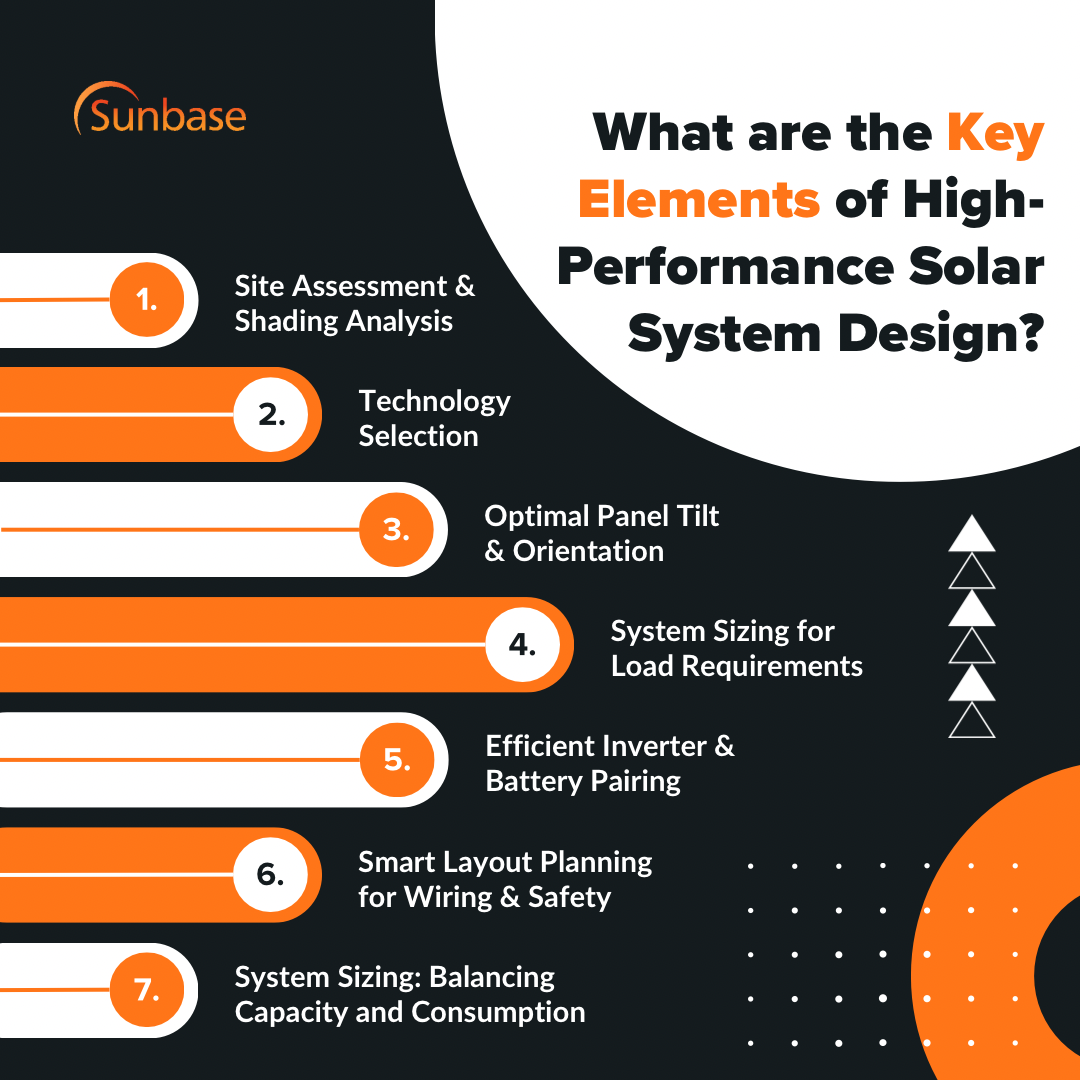
Let’s break it down step by step.
1. Site Assessment & Shading Analysis
First things first!
> Importance of sun path and shade mapping:
The sun doesn’t just rise in the east and set in the west; it moves across the sky in predictable patterns all year round. A professional designer will map out the “sun path” to ensure your panels are placed where they will receive maximum sunlight. Now let's not forget about shade!
> How can tools like LIDAR, drone surveys, and 3D modeling help?
- LiDAR (Light Detection and Ranging) for precise 3D property maps.
- Drone Surveys for revealing hidden shading issues.
- 3D Modelling for creating detailed models of the proposed solar installation.
> Climate Considerations
Did you know your local climate plays a huge role in solar design?
- Snow: Panels installed at steep angles allow snow to slide off faster.
- Wind: Reliable ground mounting systems ensure that panels stay in place during storms.
- Humidity: Coastal regions may need corrosion-resistant materials to prolong the lifespan of panels.
2. Technology Selection
Confused? Given the hundreds of panel models and various inverter options available.
> Panel types: What's the best?
- Monocrystalline Panels: Efficient and sleek, they are ideal for compact roof spaces. While they may cost more initially, they offer greater long-term value. (25 to 30 years lifespan)
- Polycrystalline Panels: Made from multiple silicon crystals, they have lower efficiency but are more cost-effective and perform better in high-temperature conditions. (20-25 years lifespan)
- Thin-film panels: Lightweight and flexible, they handle uneven surfaces and scattered sunlight. However, they are less efficient and degrade faster. (10 to 20 years lifespan) (Source)
> Inverter Choices: String inverters vs. microinverters
- Choose String Inverters: For uncomplicated, direct roof arrangements with little shading.
- Choose Microinverters: In cases of intricate or shaded roofs, optimizing the performance of each panel is essential, even if it comes at a higher cost.
3. Optimal Panel Tilt & Orientation
Where you position your panels is nearly as crucial as having them at all.
> How does the tilt angle affect efficiency by location?
The angle of the sun varies throughout the year based on the location's latitude. As a result, the ideal tilt angle for maximizing sunlight exposure typically aligns closely with the site's latitude.
For instance, if you reside in Los Angeles, CA, the latitude is approximately 34 degrees N. Thus, the optimal angle for a solar panel array would be roughly 34 degrees.
> North vs. south vs. east vs. west orientation
- South-facing (in the Northern Hemisphere): Optimal energy throughout the year
- East/West: Ideal for morning/evening loads
- North-facing: Least favorable direction, so it is typically avoided unless necessary.
> Adjustable vs. fixed-angle racking systems
- Seasonal tilting of adjustable racks optimizes efficiency, requiring additional maintenance.
- Fixed racks are simple and sturdy (more like set them and forget them).
4. System Sizing for Load Requirements
Here’s how to find the ideal size for your system.
> Right-sizing based on energy usage
Begin by reviewing your monthly electricity statements. What is your kilowatt-hour consumption? Consider future adjustments, such as adding an electric vehicle (EV) charger or accommodating a larger family. Strive for a system that satisfies but doesn’t significantly surpass your requirements.
> Under-Sizing vs. Over-Sizing: What’s Worse?
- Under-Sizing: You’ll still depend heavily on grid power, defeating the purpose.
- Over-Sizing: While tempting, excessive capacity may not be beneficial if net metering policies limit credits. Additionally, oversized systems can put unnecessary strain on the budgets.
5. Efficient Inverter & Battery Pairing
Your inverter and battery work hand in hand in your solar system. Misconfigure this duo, and chaos follows.
> Inverter Efficiency and Placement
High-efficiency inverters reduce energy loss when converting DC to AC. Position them near your panels to minimize voltage drops, but ensure they remain accessible for maintenance.
> Battery Considerations
- Considering off-grid or hybrid systems? Ensure you have ample battery capacity for nighttime and cloudy weather.
- Choose between AC-coupled (which is flexible and easier to retrofit) and DC-coupled (which is more efficient with fewer conversions).
6. Smart Layout Planning for Wiring & Safety
A messy solar array? Sounds frustrating and prone to problems. Here’s how to keep things safe.
- Avoid Long Cable Runs: Long wires lead to voltage drops. Design your layout to keep wires short, tidy, and effective.
- Leave Room to Work: Consider maintenance access when designing your space. Avoid situations where technicians must navigate rooftop obstacles during repairs.
- Code & Compliance: Every city has regulations. Your design must comply with local building codes, fire setbacks, and utility requirements. If you cut corners here, your entire project could face delays or even denial.
7. System Sizing: Balancing Capacity and Consumption
Sizing involves not only your home but also your energy usage and grid limitations.
> Residential vs. Commercial Loads
- Homes generally experience lower and more consistent loads due to a focus on daily habits (eg, AC, washing machine, the fridge, and Netflix binges).
- Businesses experience significant daytime spikes and require careful load planning due to peak demand (e.g., machines, lighting, air conditioning for 50 people).
> Net Metering and Over-Paneling Strategies
Net metering allows you to sell excess energy back to the grid, but policies vary from one area to another. Some utilities impose caps on how much you can send back, which means that overpaneling might not always be worth it. Plan your strategy according to your utility’s rules.
Explore Adapting to 2025 Solar Policy Changes: Essential Information for EPCs
Common Design Mistakes (And How to Avoid Them)

Let’s address the top mistakes that homeowners and professionals make (we’ve all been there) and how to avoid them:
Mistake 1: DIY Disasters - Mismatched components can lead to system failure.
Iconic final remarks: "How challenging could it be?".
Tempting as it may be, mixing mismatched components, such as panels, inverters, or batteries, can lead to system inefficiencies, safety risks, or total failure. It's advisable to avoid this by always consulting a certified installer and using components that have been tested to work together.
Mistake 2: Ignoring Future Needs - Failing to plan for EV chargers or home expansions.
That’s old news from 2010: Creating for the present?
If your system isn’t properly sized or designed for future loads, you may incur higher costs later. To prevent this, consult with your installer about possible upgrades. Future-proofing is a wise approach to solar energy.
Mistake 3: Neglecting Incentives - Overlooking Local Incentives for Battery Storage
What if you overlook these chances? You might pay full price for features that could have been discounted or even free with proper research.
Local governments and utilities often provide rebates for battery storage or solar plus storage combinations; however, many homeowners miss these opportunities simply because they don't inquire. To avoid this, conduct your research or collaborate with a provider who is well-versed in local incentives.
What Makes Sunbase Solar Design the Ultimate Tool for Maximizing Solar Output?
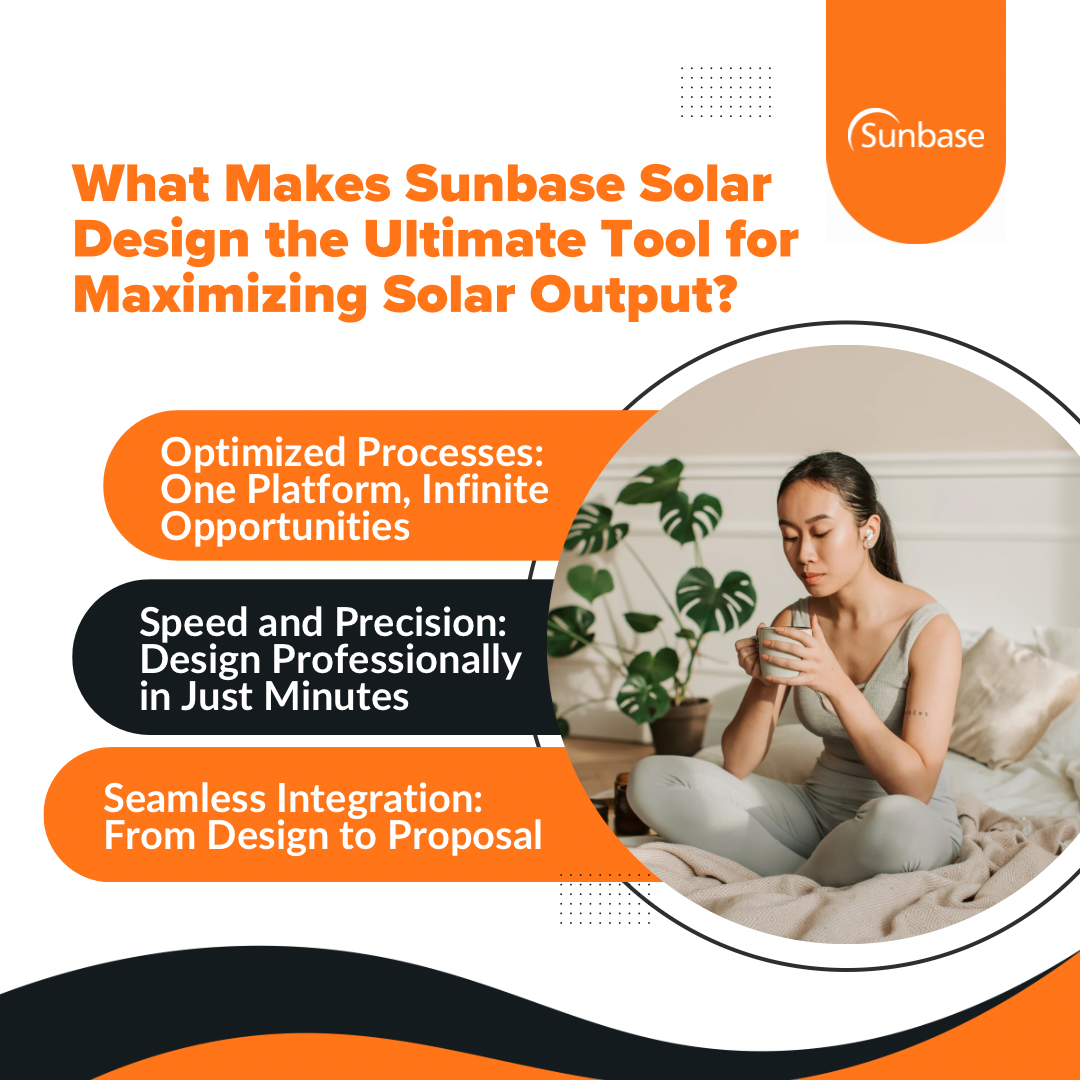
Frustrated by managing various tools and platforms for your solar projects? Presenting: Sunbase Solar Design Software, an all-in-one solution tailored for solar installers, sales teams, and project managers.
Sunbase's Professional Solar Layout Design
- Quickly creates high-quality PV layouts.
- Easily designs solar arrays, panels, and system components.
- Calculates roof pitch, azimuth, and shading for estimating energy production.
- Adapts to any project size, ensuring scalability and accuracy.
Seamless Integration: From Design to Proposal
When your design is complete, Sunbase simplifies the process of impressing your clients. You can export your layouts seamlessly into professional proposals, contracts, or presentations. Additionally:
- Realistic Visuals: Impress customers with realistic 3D renderings of their future solar systems.
- Professional CAD Outputs: Share detailed, high-quality design drawings that eliminate any potential confusion.
Simply put: One platform for everything!
It combines site evaluations, design creation, proposal creation, and project management into a single solution.
Save time and minimize mistakes by eliminating the need for multiple tools and platforms.
Explore the Top 10 Reasons Why Solar EPC Companies Choose Sunbase Solar Design Software.
Bringing It All Together
The panels are merely one part of a complex energy system.
The care and accuracy of your system's design will determine how much value you gain from the sun's free energy for the next 25 years and beyond.
A well-designed solar system is not only about generating energy; it is also about maximizing value for years to come. So, what is your approach?
Design with Sunbase
A high-performance solar system isn’t just luck: it’s physics, careful planning, and a touch of common sense.
Skip the guesswork, master these elements, and transform sunlight into savings with Sunbase! Contact us here!
FAQ's
1. Why is the initial design of the solar system so crucial for maximizing energy output?
Smart solar system design enhances efficiency through adjustable ground-mounted systems, optimizing tilt angles and orientations for better energy capture.
Choosing the right inverter is also crucial for maximizing sunlight from your photovoltaic (PV) array.
With a well-planned design, you can boost electricity generation and enjoy the long-term benefits of clean, renewable energy!
2. How can Sunbase solar design software actually help reduce costs in the long run?
An optimally designed system operates more efficiently, resulting in higher electricity generation. This boost in energy production leads to substantial savings on electricity bills over time, resulting in a long-term cost reduction.
3. Which is the best solar design software for professionals?
Choosing solar design software depends on your business needs, project size, and must-have features. Consider options like Sunbase, which provide energy modeling, shading analysis, 3D design, project management, and proposal generation.
I agree to receive marketing messaging from Sunbase at the phone number provided above. I understand data rates will apply, and can reply STOP to OPT OUT.

